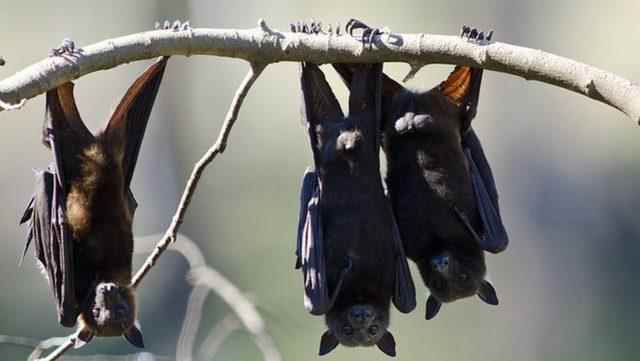A new virus from the Henipavirus family of viruses has been discovered in China. It was stated that the most common symptom of the virus, which was seen in 35 people, was fever. It has been stated that the source of the virus, which has not been proven to be transmitted from person to person, is animals, especially mice. For now, it was emphasized that the discovery of the Langya virus certainly does not indicate a new pandemic.
According to the study, published in the New England Journal of Medicine, there is no indication of human-to-human transmission of LayV. The article emphasized that the source of the infection was most likely animals, especially mice. However, it was also stated that this needs to be confirmed by other studies.
Of the 35 Langya cases detected in China, 26 were examined in detail. It was stated that all patients had fever, and in some cases, malaise (54%), cough (50%), headache (35%) and vomiting (35%). Specialists also found some abnormalities in liver (35% of patients) and kidney (8%) functions. There is no data on any deaths.
Experts interviewed by the BBC say that the discovery of a new virus does not mean a pandemic, but the emergence of a virus from the Henipavirus family is worrisome as other pathogens in this group have previously caused serious outbreaks in Asia and Oceania.
THERE IS NO COMMON PLACE
These outbreaks were caused by “cousins” of LayV called Hendra henipavirus (HeV) and Nipa henipavirus (Niv). Hendra infections are rare, but death rates are 57 percent, according to the U.S. Centers for Disease Control (CDC). Both viruses cause respiratory and neurological problems.
The most serious known outbreak of the Nipah virus occurred in India in 2018, with 17 of the 19 confirmed cases dead.

Different methodologies and differences in data provided by countries make it difficult to compare these data with death rates from Covid-19.
However, it is possible to say that the death rates in Hendra and Nipah viruses are significantly higher than the coronavirus pandemic.
Professor Jansen de Araujo, from the Newly Seen Viruses Research Laboratory at the University of Sao Paulo, emphasized that for now, the discovery of the Langya virus does not indicate a new pandemic at all, as experts who detected the new virus followed the cases for a long time.
“The observed situation does not indicate an area where the virus is seen as much as with the coronavirus,” said the professor.
Ian Jones, Professor of Virology at the University of Reading in England, also stated that Langya has not demonstrated the capacity for effective human-to-human transmission so far.
“NO CLEAR SIGNS OF MUTATION”
“More importantly, neither Hendra nor Nipah viruses showed any signs of transforming into a pandemic. There are no clear signs of mutating into a more contagious form,” Jones said.
But still, both experts believe it is necessary to observe new cases of the Langya virus.

The team that found the Langya virus said that all the patients lived in Shandong and Henan regions of China. The patients have never been in close contact with each other, and there is no indication that they have passed through similar places. The researchers also monitored contacts between the nine patients and their relatives and found no evidence of human-to-human transmission.
More than half of the patients were farmers, indicating that the virus was contracted by contact with animals.
When experts looked for genetic traces of Langya in domestic and small wild animals, they found traces of the virus in 25% of their shrews. Experts say these animals may be “natural reservoirs” of the virus.
FRUIT BATS
Bats are known to be the natural reservoir of Langya’s “cousins” Hendra and Nipah. According to the CDC, there has been no case of human-to-human transmission of the Hendra virus. The virus was transmitted to humans through the bodily fluids, tissues and feces of infected horses.
On the other hand, the CDC says the Nipah virus is transmitted by contact with infected animals such as bats or by close contact with an infected person.
From Londrina State University in Brazil, virologist Dr. Michele Lunardi did a study on henipaviruses in 2021. In the study, they said there is no known cure for Hendra and Nipan infections and that “the Nipah virus is at risk of causing a devastating pandemic.”

However, Prof. Jones says there is no reason to panic.
“I don’t think the risk of Nipah causing a pandemic is high. The virus poses an understandable risk to humans. But it can still be prevented, for example, with education, not with a vaccine,” Jones said.
The virologist also emphasized that the Nipah virus replicates better in the human nervous system, which reduces the likelihood of human-to-human transmission compared to, for example, the coronavirus that multiplies in the respiratory system.
Prof Jones continued as follows;
“The important thing is not to panic every time a new virus is discovered. Scientists are always looking for new viruses, and after Covid-19 it got even more intense. There are a lot of bad viruses out there, but that doesn’t mean we’re going to come into contact with them.”
